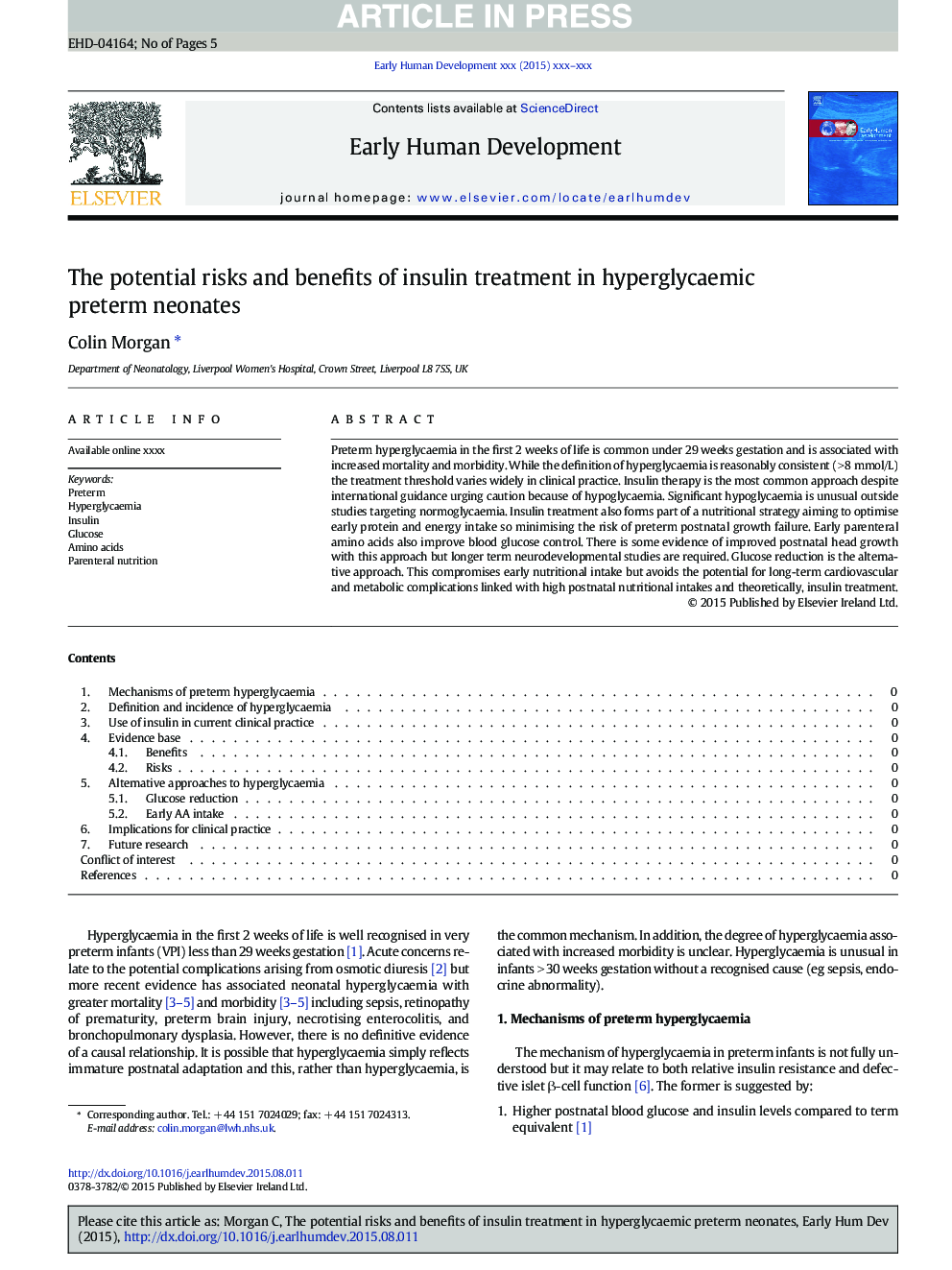| Article ID | Journal | Published Year | Pages | File Type |
|---|---|---|---|---|
| 6171789 | Early Human Development | 2015 | 5 Pages |
Abstract
Preterm hyperglycaemia in the first 2Â weeks of life is common under 29Â weeks gestation and is associated with increased mortality and morbidity. While the definition of hyperglycaemia is reasonably consistent (>Â 8Â mmol/L) the treatment threshold varies widely in clinical practice. Insulin therapy is the most common approach despite international guidance urging caution because of hypoglycaemia. Significant hypoglycaemia is unusual outside studies targeting normoglycaemia. Insulin treatment also forms part of a nutritional strategy aiming to optimise early protein and energy intake so minimising the risk of preterm postnatal growth failure. Early parenteral amino acids also improve blood glucose control. There is some evidence of improved postnatal head growth with this approach but longer term neurodevelopmental studies are required. Glucose reduction is the alternative approach. This compromises early nutritional intake but avoids the potential for long-term cardiovascular and metabolic complications linked with high postnatal nutritional intakes and theoretically, insulin treatment.
Related Topics
Health Sciences
Medicine and Dentistry
Obstetrics, Gynecology and Women's Health
Authors
Colin Morgan,
